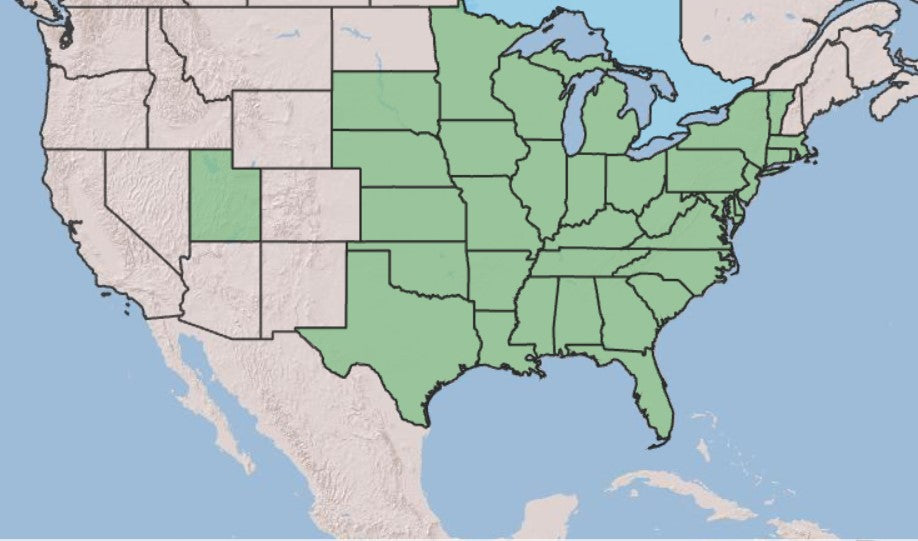Flower Moon Nursery
Coralberry, Symphoricarpos orbiculatus
Coralberry, Symphoricarpos orbiculatus
Couldn't load pickup availability
Symphoricarpos orbiculatus, commonly known as coralberry, is a versatile and attractive deciduous shrub native to the eastern United States. It is known for its unique, colorful berries and adaptable nature, making it a valuable addition to various garden settings. This plant typically reaches a height and spread of 3 to 4 feet, though it can occasionally grow taller in ideal conditions. It is hardy in zones 3 to 8.
In mid to late summer, coralberry produces small, inconspicuous white to pale pink flowers. Although the flowers aren't particularly showy, they are a favorite of bees, and plants are abuzz with pollinator activity.
The highlight of coralberry is its striking fruit display. In late summer to early fall, the shrub develops dense clusters of small, round berries that are initially green but mature to a vibrant coral pink or reddish color. These berries persist well into winter, providing ongoing visual interest and attracting birds and other wildlife that feed on the fruit.
This shrub has a spreading, mounding growth habit with arching branches that give it a somewhat informal, natural appearance. Its dense, twiggy structure makes it well-suited for use as a ground cover, in naturalized settings, or as part of mixed borders.
Coralberry is adaptable to a range of light conditions, thriving in full sun to partial shade. It is tolerant of a variety of soil types, including sandy, loamy, and clay soils, and can handle both dry and moist conditions once established.
Known for its low-maintenance nature, coralberry is generally free from major pests and diseases. The plant’s vibrant berries, combined with its adaptability and easy care, make it a great choice for adding color and texture to garden landscapes.
With its unique coral-colored berries, attractive foliage, and versatility, coralberry is an excellent addition to gardens, offering beauty and ecological benefits throughout the year.






